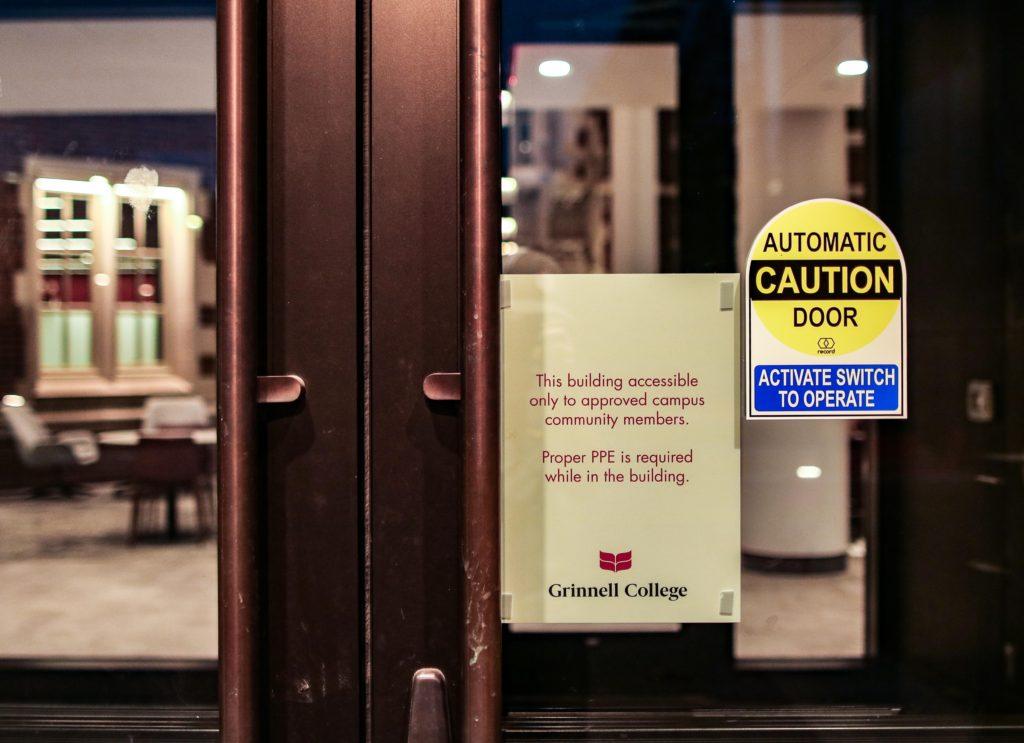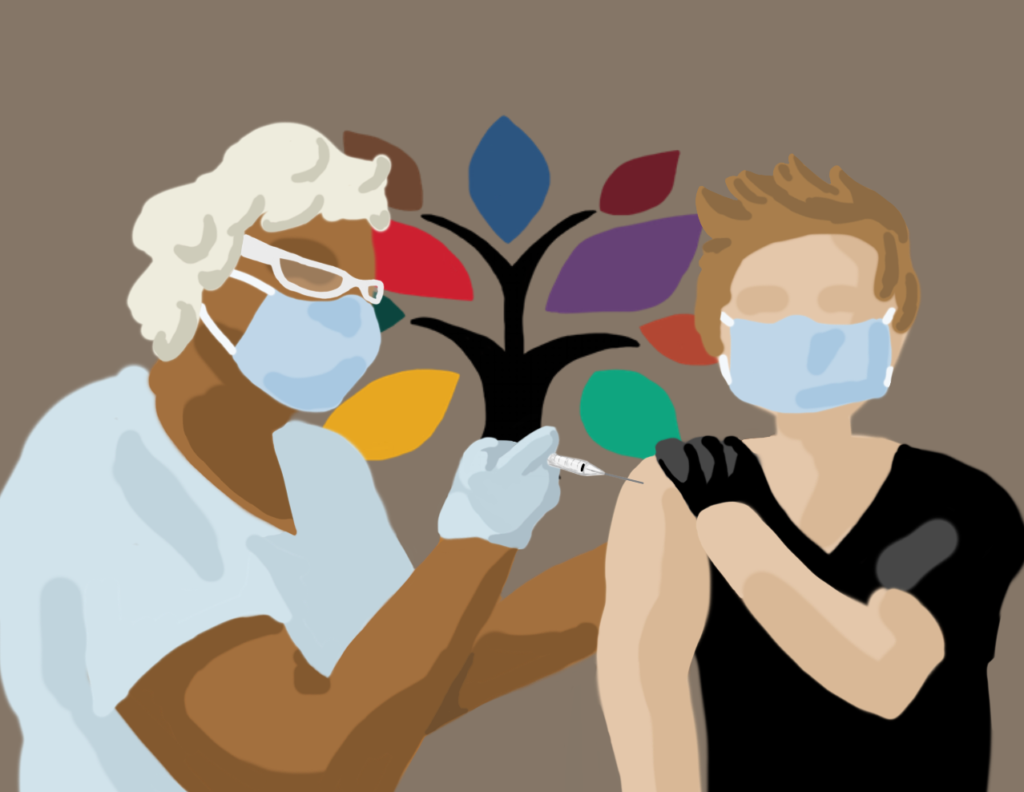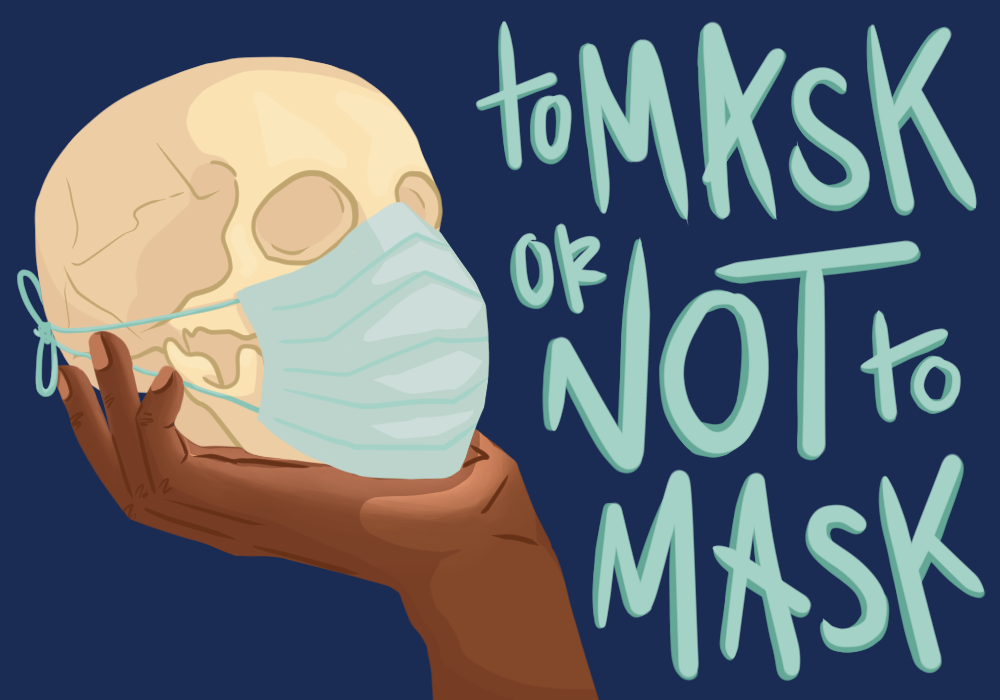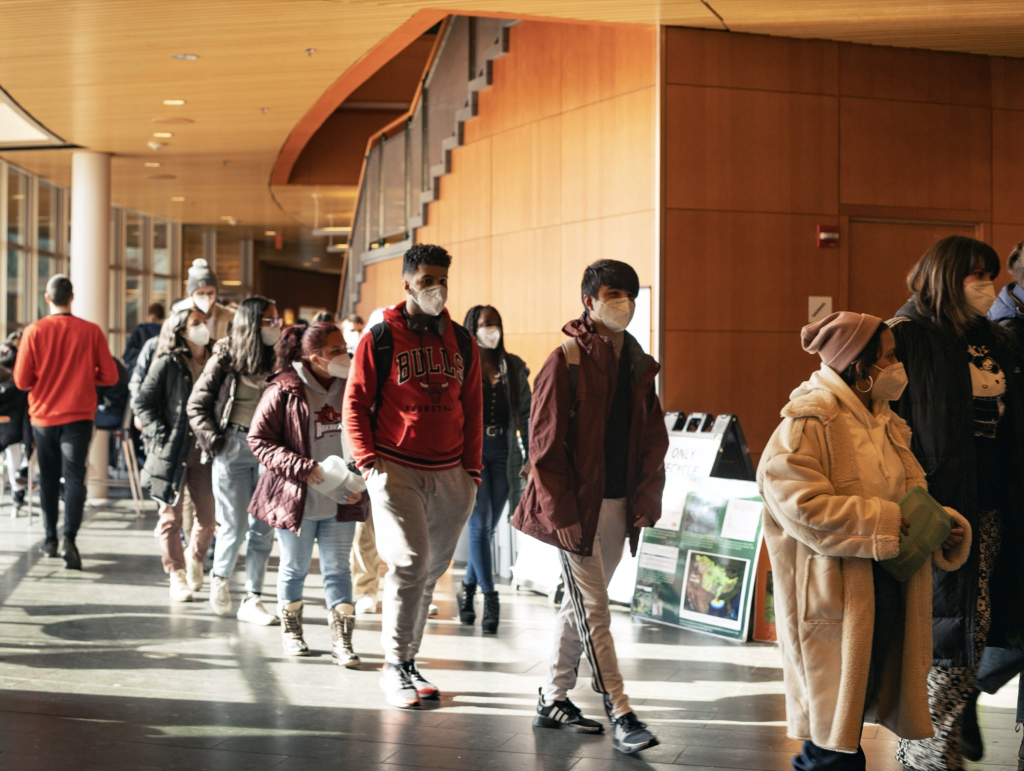This week, the Charles Benson Bear ’39 Recreation and Athletic Center and the Grinnell College Museum of Art opened to students for the first time since they shut down in March.
The fieldhouse, swimming pool and museum are open only by appointment in order to control density. The fitness center, a riskier environment, remains closed. “We were able to move some of the fitness equipment into the fieldhouse, which is a much larger space,” said Elaine Marzluff, Interim Dean of Academic Affairs. “Some of the things that people used to do in the fitness center, they can do in the much larger field house.”
Professor Nicole Eikmeier, computer science, along with coauthors at Bard College, Baruch College and Cornell University, released a preprint of a research paper in August that models how different interventions could slow the spread of COVID-19 in a residential setting. “When we released our preprint of our paper, many people at the College were interested to hear, so I believe that they took our research into consideration when deciding to move forward with opening spaces for students,” Eikmeier said.
Eikmeier and her coauthors’ model found that closing public buildings does not necessarily reduce infection rates, depending on what students do with time they’d otherwise spend in those buildings.
“If a student would normally go to the library—and that’s a fairly low-risk situation, we assumed, because while they’re in the library they’ll be wearing their PPE, they’ll be physically distanced from others in the building—but the building is closed, the question is how do they spend that time,” Eikmeier said. “It depends on if you assume students will go back to their dorm room and sit alone, or will they get together with some people they know to study outside of the library and potentially not have all of those restrictions in place, making it higher risk than if they just went to the library in the first place.”
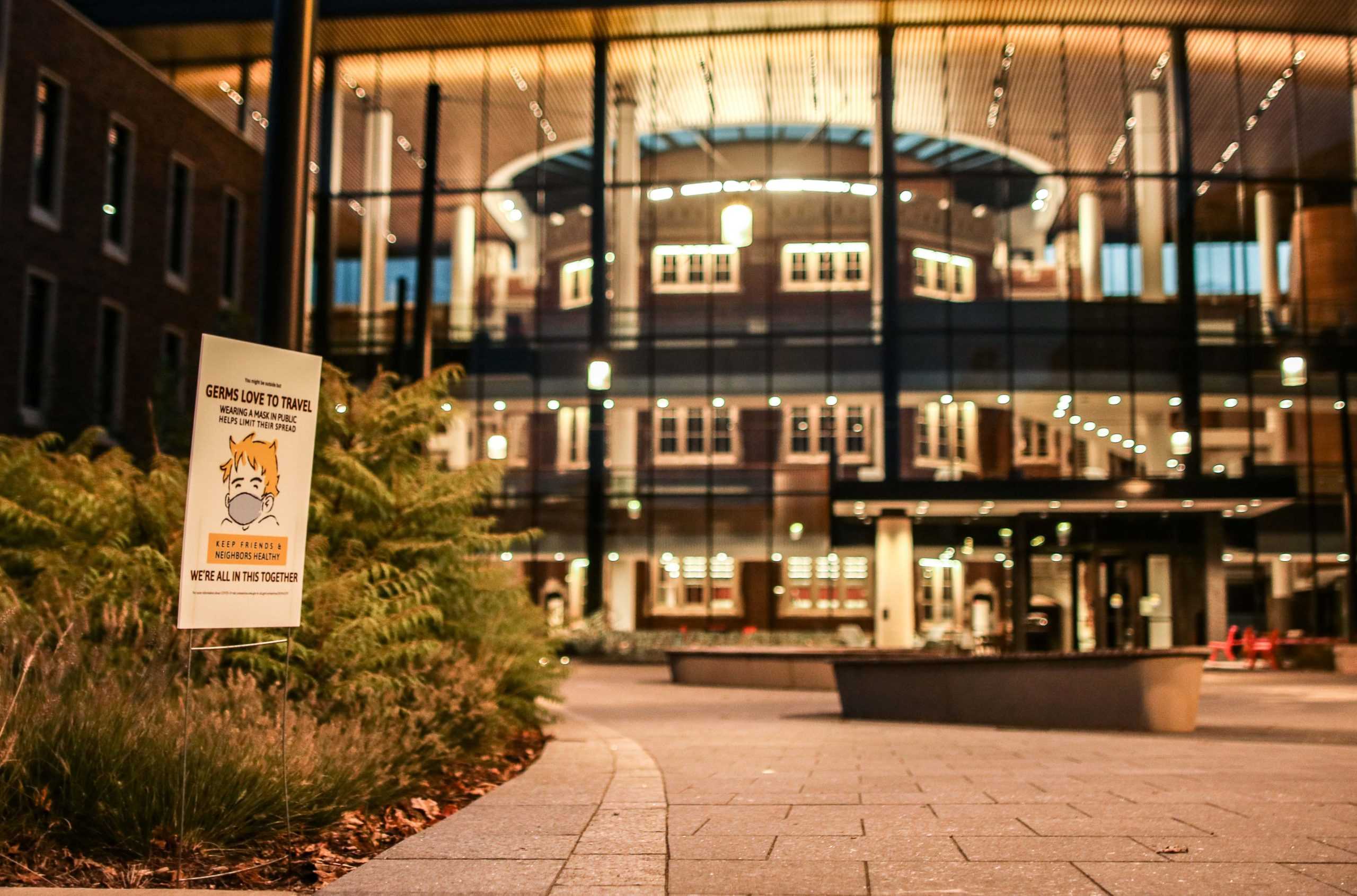
The next buildings to be opened will likely be a socially distanced gathering space such as the Harris Center and someplace to study, possibly the Noyce science building. “Our academic buildings are more challenging to think about in the environment we’re in right now, at very low-density mode, because they are being used by faculty and staff,” Marzluff said. “Faculty and staff are not in the testing pool.”
It depends on if you assume students will go back to their dorm room and sit alone, or will they get together with some people they know to study outside of the library and potentially not have all of those restrictions in place, making it higher risk than if they just went to the library in the first place.
– Professor Nicole Eikmeier, on modeling the risks and benefits of opening campus buildings to the student body
Level of existing occupancy is a major concern when considering whether or not to open a building. The Bear and the Museum were able to open in part because there aren’t faculty or staff offices there. Other concerns include: whether people would be occupying open spaces versus contained spaces, the quality of the building ventilation system and the size of the building.
Burling Library, for example, is a bad candidate for opening. “Burling is one of our older buildings, so its ventilation system gives us some consideration about how many people we’d want to have in that building,” Marzluff said. “So, if we were looking at libraries, we might open Kistle [Science Library] first because Kistle is in Noyce. Noyce is one of our better ventilated buildings. Generally, our newer buildings have better ventilation.”
Noyce is also a good candidate because of all its classrooms (contained spaces) and the size (smaller and therefore more manageable than the HSSC).
Opening buildings is good for student well-being, but safety always comes first. “I also greatly appreciate the fact that the College is … checking everything three times, because you know if they decide to open something, they want to make sure everyone’s going to be safe and they don’t have to then go back and restrict everything again,” Eikmeier said.




























































